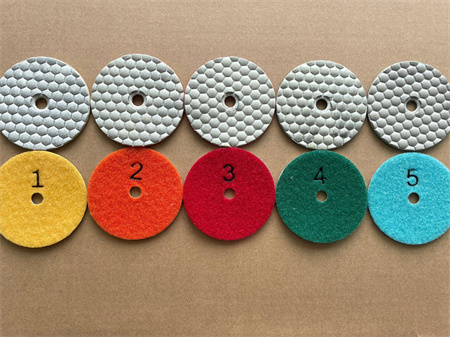The Difference Between Low and High-Grit Diamond Pads
Diamond pads are essential tools in various industries, especially in the realm of surface preparation and polishing. Whether you’re working with concrete, marble, granite, or even glass, these pads play a pivotal role in ensuring a flawless finish. But not all diamond pads are created equal. The key distinction between them lies in their grit levels, which can make a significant difference in the outcome of your project. Understanding the differences between low and high-grit diamond pads can help you choose the right one for the task at hand, leading to smoother surfaces, better finishes, and increased efficiency.
When it comes to grit, the basic principle is simple: the lower the grit number, the coarser the pad, while the higher the grit, the finer the pad. The grit of a diamond pad essentially refers to the size of the abrasive particles embedded within it. Low-grit diamond pads are rough and aggressive, designed for heavy-duty tasks, while high-grit diamond pads are smoother and finer, aimed at polishing and finishing.
Low-grit diamond pads are typically in the range of 30 to 400 grit. These pads are commonly used in the initial stages of surface preparation. When you’re dealing with rough surfaces, such as those that are heavily scratched, stained, or damaged, low-grit pads help to aggressively remove layers of material. Whether you are smoothing out a concrete floor that’s seen better days or restoring a marble countertop, these coarse pads quickly cut through imperfections. The 30 to 100 grit range is ideal for grinding and removing larger imperfections, while the 100 to 400 grit range is typically used for smoothing and refining the surface before moving on to finer grits.
The advantage of using a low-grit diamond pad is the speed and efficiency with which it works. Due to its coarse nature, it removes material quickly, making it a time-saver in situations where you need to address deep surface damage. However, it’s important to note that low-grit pads also come with a trade-off. While they are effective at material removal, they can leave behind noticeable scratches and an uneven surface if not followed up with higher-grit pads. So, while they serve their purpose in the early stages, they should not be used for the final finish.

One of the key benefits of high-grit pads is their ability to remove imperfections without creating deep scratches. This makes them perfect for tasks that require a delicate touch and an immaculate surface. For example, in concrete polishing, the use of high-grit diamond pads results in a high-gloss finish that not only enhances the visual appeal of the floor but also increases its durability by making it less porous and easier to clean.

In practice, both low and high-grit diamond pads are often used together in a multi-step process. The initial stages involve coarse, low-grit pads to quickly remove material and smooth out rough surfaces, while the final steps utilize high-grit pads to bring out the shine and perfect the finish. The transition between these two types of pads is key to achieving the desired results. The use of a low-grit pad prepares the surface for polishing, and the high-grit pad refines the surface to a high standard of quality.
When choosing between low and high-grit diamond pads, consider the material you’re working with, the condition of the surface, and the desired finish. For heavy-duty grinding and removal of deep imperfections, low-grit pads are your best bet. For finer polishing and a glossy, smooth finish, high-grit pads are essential. Understanding when to switch from one to the other is crucial for achieving a seamless, high-quality result.
In conclusion, the difference between low and high-grit diamond pads is more than just a matter of surface preparation vs. polishing. It’s about knowing how each grit functions and when to use it for the best possible outcome. Whether you’re restoring an old countertop or polishing a concrete floor, understanding the role of each pad ensures that you’ll get the finish you want—smooth, durable, and beautiful.